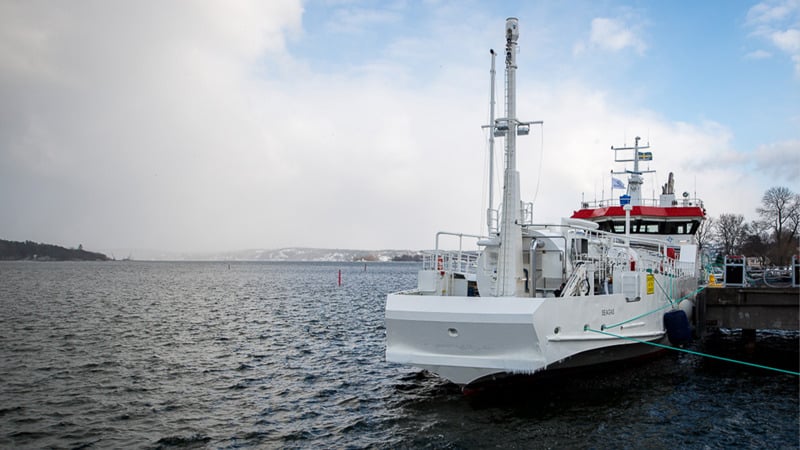Gasum is maritime sector’s one-stop-shop for reliable LNG and LBG bunkering
Gasum’s long history in bunkering and an excellent track record ensure its customers the best possible LNG and LBG bunkering services either from ship to ship or at a port. In addition to bunkering services, Gasum can offer its maritime customers services regarding the regulative environment, EU ETS and even digitalization.
Bunkering liquefied natural gas (LNG) and biogas (LBG) effectively, safely and reliably demands practice and experience. Gasum has been a pioneer in LNG and LBG bunkering for a decade with infrastructure and a fleet that allows bunking both at a port and at sea.

“Customers can rely on our expertise as we are not practicing anymore. Our track record is excellent, and our bunkering fleet can extend its services from the Nordics to France,” says Jacob Granqvist, Vice President of Gasum Maritime.
The demand for Gasum’s bunkering services has been on the rise as the regulations from the FuelEU Maritime initiative are drawing close. LNG and LBG are currently the cleanest marine fuels that are readily available and supported by technology.
Ship-to-ship, truck-to-ship bunkering or bunkering at a port?
Bunkering can happen as a ship-to-ship procedure from a bunkering vessel, from truck to ship or from an LNG/LBG terminal.
The ship-to-ship procedure is the most used bunkering option. It allows quick and effective bunking of all the fuel the ship needs at one time and can be performed either at anchorage or in a port.
Usually, the amount of LNG transferred in a bunkering is 400 to 500 tons. However, in some cases where the required amount of LNG is smaller, bunkering from a truck can also be a viable option.
“Bunkering from a truck at a port is used for smaller amounts of LNG but when the ship needs to be fully refueled, the shipping company usually opts for ship-to-ship bunkering as it is more convenient and can also be done without bringing the ship to a port,” explains Granqvist.
Gasum has four bunkering vessels that can serve all kinds of LNG vessels. However, because of the increase in demand there have been ongoing discussions about expanding the fleet to better meet the needs of the customers.

Gasum is a safe, reliable and stable partner for bunkering
Bunkering LNG/LBG is extremely regulated – more so than bunkering oil. The bunkering equipment must be certified, and both the crew of the bunker vessel and the crew of the customer’s ship trained for handling LNG.
“Bunkering LNG with professionals is as safe as fueling a car. Gasum has performed the operation hundreds of times, so we know how to ensure the safety of the operation,” explains Granqvist.
Gasum’s reliability and stability extends also beyond the safety of bunkering. It operates the full gas value chain from top to bottom. As the biggest biogas producer in the Nordics it offers its customers a flexible way to shift from fossil fuels into renewables.
Helping maritime industry to navigate digitalization, FuelEU Maritime and EU ETS
Gasum also offers services that help its maritime customers navigate the evolving regulative environment. In addition to the FuelEU Maritime package, the maritime transport sector will become part of the EU Emission Trading System (EU ETS) in 2024.
Emission trading might be new to shipping but it isn’t new to Gasum. Gasum’s Portfolio Services have an extensive history in offering expert services in EU ETS for customers representing various industries.
Read more: Gasum Portfolio Services is your expert in EU ETS
Gasum is also developing its digital services to complement its holistic approach to its customer relations. In the future, Gasum’s customers will be able to monitor their status when it comes to their emissions, the ETS purchased, and the overall market situation.
Digitalization stretches also to bunkering as Gasum already uses digital services to facilitate the procedure.
“We are using FuelBoss which simplifies the bunkering procedure for shipping companies. Everything from purchasing the service to checklists concerning the bunkering itself can be managed via FuelBoss. And according to the feedback our customers have been really satisfied with the service,” says Granqvist.



